Equipping yourself with the best hunting GPS will give peace of mind as you focus more on your hunting. You won’t have to worry about getting lost anywhere. You can locate key areas like game trails, streams, fields, openings, and even where you parked your vehicle using the right GPS. To help you choose a GPS unit that’ll suit your needs, here’s a review of the 10 best hunting GPS units available on the market today.
Contents
- Features to consider in Good Hunting GPS
- The Best Hunting GPS 2024
- 1. Garmin GPSMAP 64s Worldwide
- 2. Garmin GPSMAP 64st High-Sensitivity GPS
- 3. Garmin Oregon 650t 3-Inch Handheld GPS
- 4. Garmin Oregon 600 3-Inch Worldwide Handheld GPS
- 5. Garmin Montana 680t Hunting GPS
- 6. Garmin inReach Explorer+ Handheld Communicator
- 7. Magellan eXplorist 310 Waterproof Hiking GPS
- 8. Garmin eTrex 20x Handheld GPS Navigator
- 9. Magellan eXplorist 350H Handheld GPS
- 10. Garmin Foretrex 401 Waterproof Hiking GPS
- Guide to Buying the Best Hunting GPS
- Bottom Line
Features to consider in Good Hunting GPS
There’s a wide variety of GPS models that exist on the market today. Most buyers may end up feeling baffled as to which model is the best handheld GPS for hunting. Choosing the right product doesn’t have to be a matter of trial and error. The GPS unit must be small, lightweight, easy to hold, and easy to use. You should be on the lookout for the following crucial considerations when looking for the best alternatives.
Satellite Reception
Most GPS units use the 24 satellites owned by the US Department of Defense. This means that it’ll be easier for you to get information about the area you’re hunting in using the GPS unit. The latest models also use the Russian based Global Navigation Satellite System (GLONASS) alongside GPS to provide you with excellent reception even under heavy forest or cloud cover. Some units can give you better satellite reception than others, 3D locking the user’s position in a timely fashion. The size of the antenna will also determine the speed of the GPS unit. A larger antenna will provide faster results than a smaller one. The number of satellites available in an area will determine the accuracy of the displayed image and the user’s position.
Ease of Use
The ease of use of a GPS unit will be determined by the type of screen it features and the button configuration. Consider this before you get yourself one. Most handheld GPS units still feature buttons, although some of the latest models also come with a touchscreen. If you want to key in the text as quickly as possible, a touchscreen model would be better. The quality of the displayed image on touchscreen GPS units can’t be compared with that of a smartphone, despite the advancements made. A unit with good-quality buttons might also be good enough for some users.
Speed
Even though there are many online sources that you can use to determine the GPS unit’s speed, it’s recommended that you go to a store and test some models yourself. The seller’s opinion may also help you to choose the best model if you find yourself torn between two models. To test which GPS model is the fastest, select two units and try accessing your location. Depending on the input method of the model, key in your location and determine how long it takes the device to interpret your message. This will help you in estimating the processor speed. The speed might also refer to how much time it takes for a model to startup. Some models have a faster boot-up time than others, helping you to get back on track with a quick look at your location.
Display Quality
If you’re going to be looking for a waterproof model, it’s highly likely that you’ll come across a wide variety of models that feature a plastic display. Plastic is the best choice since it’s built to last and can withstand the elements. This also applies to touchscreen GPS units. However, when it comes to displaying quality, there are some differences between models. Some units come with backlit screens that play a big role when using your GPS unit in direct sunlight. You should also take into account that a majority of models come with screens that are harder to read compared to those on smartphones nowadays.
Mapping Software & Compatibility
Most handheld GPS units come with their mapping software. You can easily figure out the advantages of a mapping software by comparing its specs and capabilities over another software. Is it possible to share waypoints or routes via Google Earth? Is it easy to utilize social networks and let your friends and followers know where you’re going?
Besides the ability to integrate social media networks, it’s also important to check whether the platform is intuitive and works with other devices. For instance, there are a few GPS software that’s compatible with the Mac OS X. If this is one of your requirements when looking for a GPS unit, you may want to consider getting a Garmin hunting GPS unit. You should also check that the GPS you intend to get for yourself can use open-source mapping software. You can also use a large number of free platforms to update your maps with new and improved data.
Number of Maps
Some models come with a higher number of maps making them more convenient than others. Some GPS units only come with the United States and Canada’s map, whereas others are loaded with the maps of Europe, Australia, and North America. You should also remember to update your maps, whether you have to buy them from the manufacturer or not. You might be in for a rude shock when you fail to update your service for several years.
Most annual subscription to maps may come as a surprise to some buyers, while others may be quite okay with it. Fortunately, many websites offer maps and satellite imagery for free these days. You can use some of these online sources for downloading high-quality imagery and free spatial data. The two most acclaimed spatial data are the US National Agricultural Imager Program and the US Geological Survey’s Seamless Data Warehouse.
The only disadvantage of using free maps is the fact that you’ll have to learn your way around them. That’s why free maps may be less comfortable to use compared to the ones provided by the manufacturer. It all comes down to whether you’re ready to pay for annual subscriptions to access the maps.
Accessories
Some of the standard accessories of a handheld GPS are rechargeable batteries, carrying cases, USB cables, and mounts. A unit the features a mounting system will be useful for any other activity other than hunting. The mounting system allows you to use these GPS units in your vehicle too.
Most smart electronic devices come with USB cables these days. Getting one for your GPS unit might not be an issue as you may have it lying around the house. If your budget allows, you can get rechargeable batteries for your unit. Some GPS models also come equipped with rechargeable battery packs and a slot for standard batteries that you can use interchangeably. Needless to say, the final price of a model will determine the number of accessories that’ll come with the device.
The Best Hunting GPS 2024
1. Garmin GPSMAP 64s Worldwide
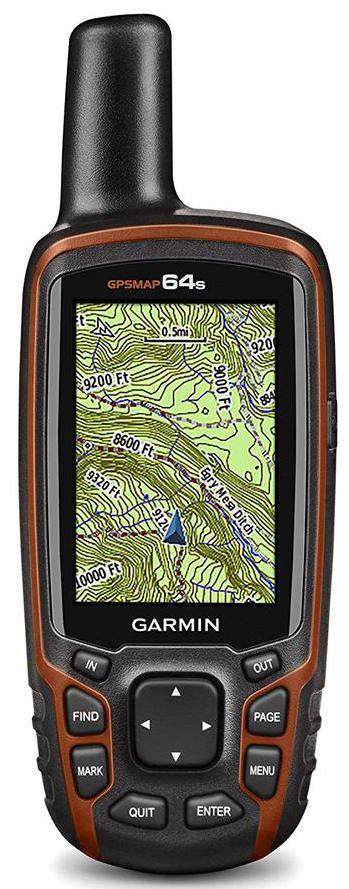
Editor’s Rating:
Satellite Reception
The Garmin GPSMAP 64s uses a high sensitivity GPS and GLONASS receiver with a quad-helix antenna for premium reception. The antenna is useful in helping to accurately find your position. Hunting GPS that use GLONASS technology lock onto your position 20-times quicker than those that don’t. This excellent reception means that the Garmin 64s maintains its location even in heavy cover or deep canyons.
Maps and Mapping Software
This is an all-terrain GPS that comes with a preloaded worldwide base map having a fair amount of detail. It also shows the names of backcountry roads. With a wide array of detailed topographic, road and marine maps from Garmin, it’s easy to add additional maps by downloading them on your GPS. Its large memory means that downloading additional maps won’t be an issue. The Garmin 64s supports BirdsEye Satellite imagery and is compatible with Custom Maps. You can easily transform paper maps into downloadable ones for free.
Memory
The Garmin 64s comes with 4GB of on-board memory and a slot for a micro SD card. This provides you with more than enough space to download additional maps, collect various waypoints and other information.
Battery Life
The Garmin 64s doesn’t have an impressive battery life which lasts only for 16 hours. This is shorter than previous models and other GPS tested. It’s powered by 2 AA batteries that you’ll have to get separately. It’s easy to take extra batteries with you since it’s powered by standard batteries. This makes it perfect if you’re going to spend a long time being out and about.
Buttons
This hunting GPS from Garmin opts for buttons instead of having a touchscreen. Whereas this makes the device a bit heavier and slower, it’s quite useful in all weather conditions since it can still function if you have gloves on.
- The unit has an excellent reception even in heavy forest and cloud cover.
- It’s fairly easy to enhance the unit’s map data with new topo, road, and marine maps.
- It utilizes both the US-based GPS and the Russian based GLONASS system.
- It’s extremely user-friendly with clearly defined buttons.
- It comes with 4GB of internal memory.
- This hunting GPS display can easily be read in sunlight.
- It has shorter battery life.
2. Garmin GPSMAP 64st High-Sensitivity GPS
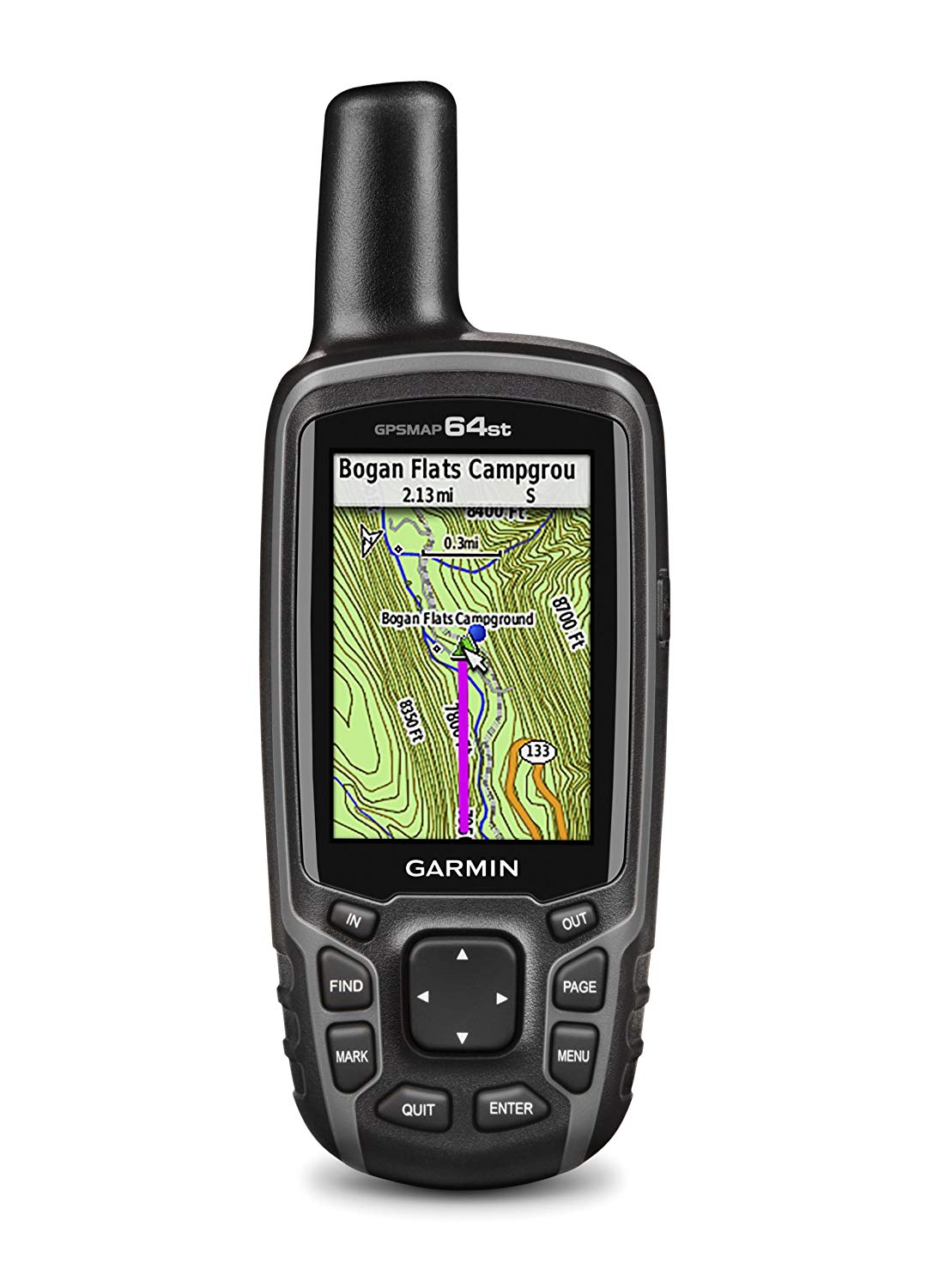
Editor’s Rating:
Screen
The Garmin 64st features a 2.6-inch sunlight-readable color screen that some users might find to be rather small compared to other models. Garmin has opted for buttons for the 64st instead of a touchscreen making it useful in all weather conditions.
Reception and Navigation
The 64st uses a built-in 3-axis tilt-compensated electronic compass and a high-sensitivity GPS and GLONASS receiver with quad-helix antenna. This makes it suitable for use in canyon-like environments and northerly latitudes.
Ease of Use
This model doesn’t have a touchscreen and is ideal for those who prefer using buttons instead. The buttons can be easily pressed and the unit is easy to operate. Therefore, the 64st doesn’t pose a challenge to persons who aren’t tech-savvy.
Battery
There are two options when it comes to powering the GPSMAP 64st. You can either choose two standard AA batteries or get a rechargeable battery pack. The latter can last for a longer period compared to the standard batteries that may run out ahead of time. You also don’t have to remove the battery pack when charging, allowing you to connect the GPS to an AC adapter or a USB cord attached to a computer.
Maps
The 64st has a built-in worldwide basemap with shaded relief and a 1-year subscription of BirdsEye Satellite Imagery. It also comes with 8GB of internal memory and a micro SD card slot. Users can take advantage of this to download maps they like. The 64st is fully compatible with Garmin Custom Maps that gives users the freedom to transform electronic and paper maps into downloadable ones for their device.
- The GPS receiver acquires signal within 30-seconds, which is quite quick.
- It uses USGS maps that have 10-foot topographical lines that mean you can precisely tell where elevation changes happen.
- It features built-in Bluetooth and cellular connectivity.
- This is a sturdy hunting GPS that can’t break easily since it doesn’t have a touchscreen.
- The quick boot-up time means you can get a signal locked in for you to use right away.
- The battery life lasts for only 8-12 hours which is quite short.
- The batteries aren’t rechargeable.
3. Garmin Oregon 650t 3-Inch Handheld GPS
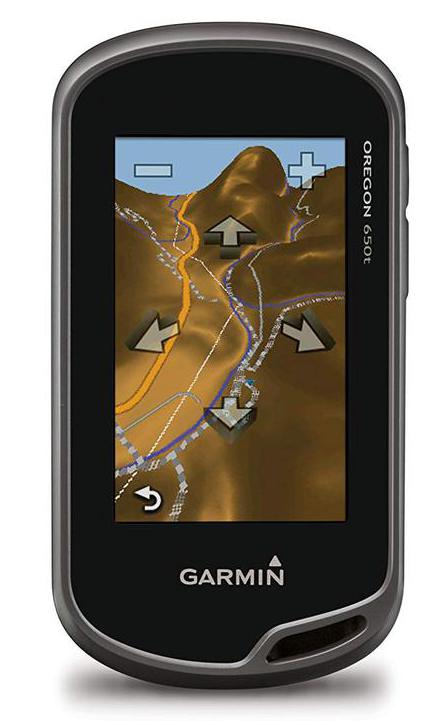
Editor’s Rating:
Connectivity
With the Oregon 650t, you can share your particular tracks, routes, geocaches, and waypoints with other compatible Garmin devices. You can download all the caches you want from the internet and also share large files like photos and custom maps with friends and family. Moreover, you can plan trips with friends and family with the GarminAdventures on this device before you go hunting.
System
The 650t comes with the BaseCamp software that lets you view and organize your maps, routes, tracks, and even your waypoints before you go out for a hunting activity. The 3-axis electronic compass will provide you with great accuracy too. The device’s interface comes with a high-speed USB and is also NMEA 0183 compatible.
Camera
The Oregon 650t features an 8MP camera that takes good images and automatically geotags them. It isn’t DSLR quality, but it’s a lot more convenient than having to bring a second device along.
Maps
The 100,000 scale US base map is useful for frequent travelers, ensuring that you’ll always have a Topo map on the device. Garmin also sells 24K topo maps, although there are plenty of free user-made topo maps available online. You can also customize your maps with this hunting GPS while also take advantage of the 1-year subscription to the BirdsEye aerial imagery or USGS topo subscriptions.
Battery Life
The Oregon 650t comes with a dual battery feature. With an included NiMH battery pack this unit can last up to 16-hours a day on a full charge. Also included is the 2 AA battery slot that acts as an emergency battery power source. A combination of both these batteries would last you up to 22-hours. The batteries can also be used interchangeably.
- You can geotag images and make them part of your route record with the 8MP camera with digital zoom.
- It comes with a built-in GPS flashlight.
- It features a sunlight-readable touchscreen that’s also impact resistant.
- It comes with a dual battery system.
- It utilizes both the US-based GPS and the Russian based GLONASS system so you won’t suffer blind spots in your coverage.
- It has a short battery life making it necessary to carry extra batteries with you.
4. Garmin Oregon 600 3-Inch Worldwide Handheld GPS
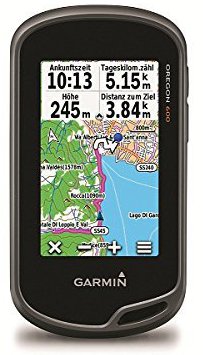
Editor’s Rating:
Satellite Reception
The Oregon Handheld GPS features Garmin’s reliable uplink to both GPS and GLONASS navigational satellites. It also has a piece of bundled software called BaseCamp that allows you to display Topo data in either 2D or 3D as well as download satellite imagery through the 1-year subscription to BirdsEye. This brings improved reception to users in urban or natural canyons or northerly latitudes.
Touchscreen
The touchscreen of this GPS unit gives you an easy way to interact with the display. The 3-inch Worldwide Handheld GPS from Garmin uses a touchscreen feature that’s responsive so that you have no problem hitting exactly what you want on the screen. The multi-touch capability helps to ensure a smooth experience as well.
Buttons
Besides the touchscreen display of this unit, there are two configurable buttons on the side. To turn on the unit, hold down the top button. Single tapping or double-tapping this button also selects a shortcut to a menu, setting, or application. The lower button allows you to hold, single, or double-tap it.
Compatibility
It’s quite easy to share all your routes, geocaches, tracks, waypoints and other data with other wireless Garmin devices. The Oregon 600 can share data with other Garmin devices up to 50-times faster. It’s also easier to send over larger files with ease as well.
Maps
Adding maps to the Oregon 600 is quite easy to do. Thanks to the large storage memory included in this unit, you can add lots of the maps. The unit also comes with an included map once you purchase it.
Dual Battery System
The Garmin Oregon 600 Handheld Hunting GPS features a dual battery system that ensures you don’t run out of power. The system is capable of using either 2 AA batteries or a NiMH battery pack that’s charged by the unit itself. Having these two options, you’ll always have enough battery life to get through any adventure.
- You can clip the GPS unit on the D-clip on your tactical pants for ease of access.
- You can track your route and keep a record of important waypoints crucial for survival.
- The display is easy to read in the sun.
- It’s equipped with Bluetooth technology.
- It features a dual battery system where you can back up the NiMH battery with standard AA batteries.
- The software freezes way too often.
- The maps aren’t routable.
5. Garmin Montana 680t Hunting GPS
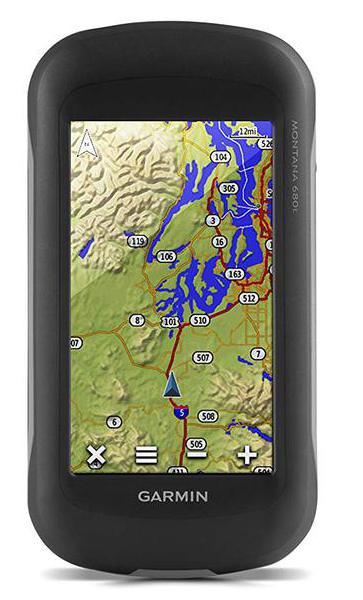
Editor’s Rating:
Dual Satellite Coverage
The Garmin 680t employs both GPS and GLONASS systems. It also boasts of WAAS and Hotfix meaning it picks up a signal very quickly and maintains it. This coverage also ensures that you won’t lose your position even under heavy forest cover.
The inclusion of TOP 100k maps and a 1-year subscription to BirdsEye satellite imagery are an additional bonus. These features used alongside the free Basecamp software take this GPS hunting unit’s capability to another level.
Waterproof
Similar to other Garmin devices in the same range, the 680t is also waterproof. This feature is quite valuable to those who take part in outdoor activities where they’re likely to get wet.
Geotagging & Memory
The Garmin Montana 680t features a very impressive 8-megapixel camera with autofocus as well as automatic geotagging. You can simply snap pictures and set them as waypoints when you’re out and about in the great outdoors. To aid you in storing these pictures, this GPS unit is equipped with 8GB of internal memory and a memory card slot. This means that you can load more maps besides the over 200 additional maps listed by Garmin.
Display
The 680t hunting GPS comes with a high-quality 65-k dual-orientation glass display. The touchscreen is glove-friendly, so there’s no need to remove your gloves every time you need to operate the device.
Batteries
This hunting GPS comes with a Lithium-ion battery pack that provides around 16-hours of non-stop power. It can also run on 3 AA batteries should your Lithium-ion battery run out of power. These standard batteries can last for around 22-hours.
- It features an 8MP camera that automatically geotags photos.
- It comes with a 1-year subscription to BirdsEye satellite imagery that gives you clear images of your surroundings.
- With track manager, you can save the route you’ve traveled including important waypoints.
- The display is larger than that of other hunting GPS.
- The display is a bit more difficult to read, particularly in bright sunlight.
6. Garmin inReach Explorer+ Handheld Communicator
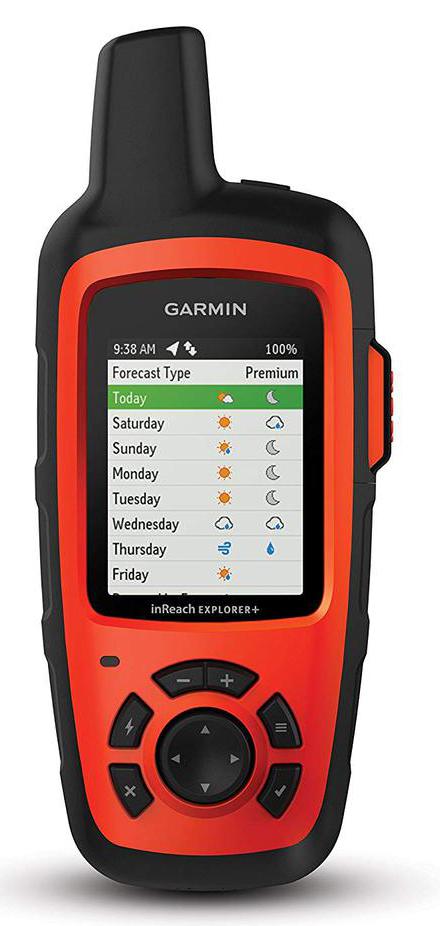
Editor’s Rating:
Interface
This hunting GPS unit features a 2.31” LCD screen which is usable on a sunny day and very readable. Below the screen are 6 independent function buttons and a 4-way directional pad. The device is roughly 2.7” by 6.5” by 1.5” and weighs about 7.5oz. The top of the device has a raised bump that houses the GPS antenna, and the bottom of the device features a rubber plug that protects the micro-USB charging port. The SOS button is located on the right side of the device and is protected by a hard rubber cover that prevents it from being accidentally pressed.
The Garmin inReach Explorer+ is 1PX7 water resistant meaning it can withstand some rain, and light splashes. However, this doesn’t mean it’s a waterproof device. You should be careful when expecting extreme wet conditions, such as swimming.
Weather Forecasts
This unit comes equipped with a weather forecast feature that lets you look up basic or premium forecast information. This is a great feature when you go off the grid and need to avoid bad weather, particularly blizzards. The amount of detail provided in basic forecasts includes hour by hour breakdowns, as well as wind speed, barometric pressure, cloud cover, precipitation amounts, and temperature.
GPS Tracking
It’s possible to track and share the track you take on a hike using this device with another person in real-time. This comes in handy when you want other people to be able to follow your track using the web-based inReach Mapshare capability, using a personalized URL that you send them when you start your trip. This tracking feature is also useful if you’ve missed a previously agreed-to check-in time because of an accident and can’t signal for help. Rescuers can follow your track to your current location.
Battery Life
Garmin inReach Explorer+ comes with a non-replaceable lithium-ion battery that’s sealed in the unit’s housing. The battery can be recharged through a micro USB port on the bottom of the device. The battery can last for 4-5 days if you’re careful about the tracking intervals you use. You can keep the screen brightness at a low level or turn off the device at night to extend the battery life.
- It comes with 1005 global Iridium satellite compatibility.
- It’s possible to track/share your location with friends.
- You can also use the two-way messaging feature.
- It has a sturdy construction and is easy to use.
- It doesn’t come with GLONASS.
- You need to be outside to use it.
7. Magellan eXplorist 310 Waterproof Hiking GPS
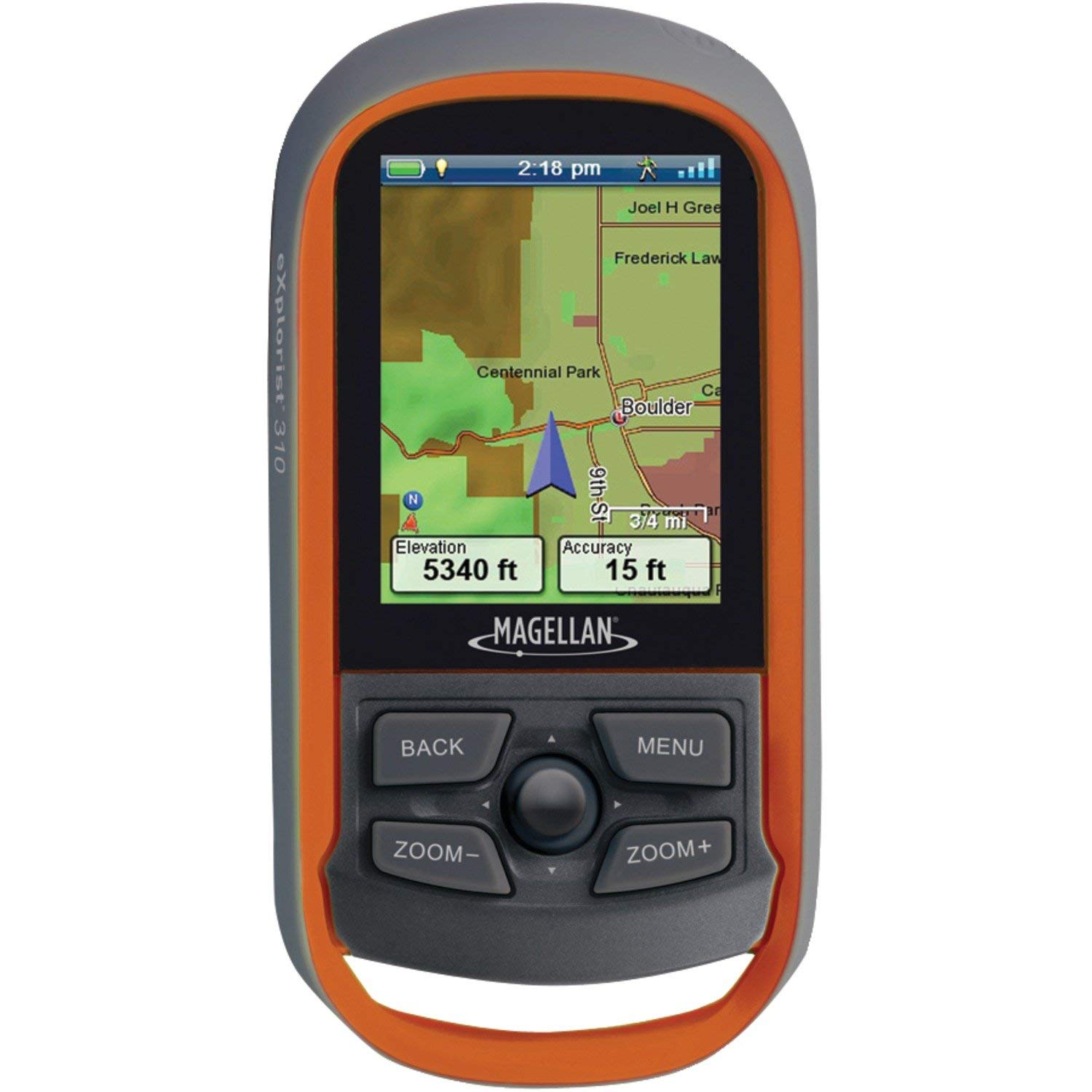
Editor’s Rating:
Screen & Interface
The vibrant graphical user interface, simplistic approach towards the main menu and creative menus make its operation quite easy. The 2.2” vibrant screen of the eXplorist 310 is perfect for sunlight readability due to its transflective nature of construction.
Map
This GPS unit is equipped with world edition maps preloaded with references to all the major roads of the world along with major landmarks of Western Europe and North America among others. Also integrated into the maps are areas of interest like major city points, tourist attractions, and transport hubs.
Waterproof
The rugged construction of the device makes it almost indestructible against accidental drops and shocks. It’s also rated IPX-7 when it comes to water resistance standards. This makes it an ideal hunting GPS unit to use in rainy and snowy weather, or even fishing.
Sensors
The Magellan eXplorist 310 is equipped with a highly sensitive SiRFStarIIl GPS transceiver that’s capable of being accurate to within 3 – 5 meters. This enables the user to experience enhanced navigational sessions.
Battery Life
This GPS unit is powered by 2 AA sized batteries that aren’t included in the package. Despite being a performer, the eXplorist can run straight for up to 18-hours per pair of rechargeable lithium-ion batteries.
Power Saving Mode
The Magellan eXplorist 310 is a small and light hunting GPS unit that’s designed to be put in a pocket or hung from a zipper on your gear. To save batteries, you can put it into a power-saving mode instead of turning it off and having to acquire satellites all over again on startup. This power-saving mode helps to extend the batteries life, especially if you’re not using it constantly.
- It features an advanced power-saving mode that allows you to maximize battery life.
- It’s quite an affordable hunting GPS unit.
- SiRFStarlll GPS provides a high degree of accuracy.
- It comes preloaded with a worldwide base map so you can use it anywhere.
- It’s easy to load and alter tracks, geocaches, waypoints, and other data.
- It’s waterproof meaning it can be used in rainy and snowy conditions.
- It doesn’t have a backup battery capability.
- The screen is smaller than larger handheld units and can be difficult to read in the bright sun.
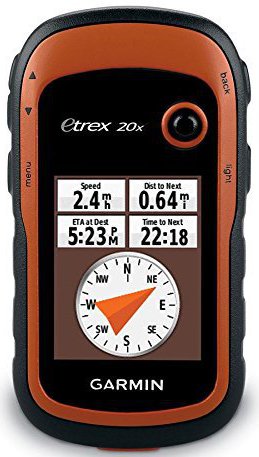
Editor’s Rating:
Reception
The Garmin eTrex 20x Handheld GPS Navigator can quickly attain a signal in both covered and wide-open spaces. GPS and GLONASS satellite navigation allows you to quickly lock on to a position that’s accurate to within 9-feet. However, reception can suffer in covered terrain. Although the device is fast to attain a signal, it may not be as accurate as higher-performing devices.
Display Quality
The screen is quite small, measuring only 2″ by 2″. The screen’s resolution stands at 240×320 pixels. The trans reflective display works well in both high and low-light conditions. Although the screen is small, the font is big enough so that you won’t have any trouble reading it.
Ease of Use
This device is quite simple. It doesn’t have a touchscreen making it great for users who prefer buttons. The buttons are also large enough to enable you to use it with gloves on. With simple features, an easy to navigate menu and quick access to change the battery, this is a no-fuss device. Using it shouldn’t be a big challenge.
Speed
This hunting GPS unit is surprisingly fast for its size. The speed is measured in terms of its ability to draw and redraw and its capability for quickly picking up a new location.
Versatility
The Garmin eTrex 20x is water-resistant and works well in wet weather conditions and snow. It has a fantastic 25-hour battery life and is lightweight. It’s easy to use even if you’re wearing thick gloves. Despite it taking longer than other high performing devices, all waypoints taken are marked and labeled accurately.
- This is a compact, dependable and efficient hunting GPS.
- There are additional maps available through the Garmin website.
- It utilizes both GPS and GLONASS systems that always have a backup source of data.
- It’s easy to use and features a great screen quality.
- It only has a single power source of 2 AA batteries.
- You have to pay to get additional maps.
9. Magellan eXplorist 350H Handheld GPS
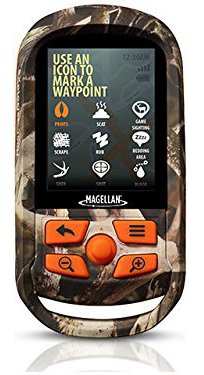
Editor’s Rating:
Interface
The eXplorist 350H interface is very simple, using a black background with orange and white text. The menu has been simplified into four items, breaking down each task that you’ll want to use the 350H in the field. It features an easy to understand colored LCD interface and is fully equipped with high-sensitive SiRFStarlll GPS with 3 to 5-meter accuracy and numerous attributed hunting options.
Waypoints
The Magellan eXplorist 350H makes it possible to pick over 30 different hunt specific waypoints that are divided into landmarks and tracking of animals. It offers a comprehensive pre-loaded base map with a detailed road network, land use, water bodies, and trails.
Maps
This hunting GPS unit comes with a preloaded Topo map for US and Canada. A 1-year free subscription to DigitalGlobe’s satellite imagery is also available to download. It also comes with advanced maps that include land use, parks, waterways, and even airports and contour elevation overlays for easy navigating.
Batteries
The 350H is powered by 2 AA standard batteries that give hunters up to 18-hours of battery life during and after the hunt.
Other Features
The Magellan eXplorist 350H comes with a feature that allows you to select specific hunting zones based on GMU & WMU given data for each region. Once you select a specific region, the GMU and WMU borders become available on the 350H map display. There’s also a pre-loaded hunt calendar that comes with this GPS unit. The calendar allows hunters to stay with legal hunting hours by knowing sunrise and sunset times. Another key feature of the 350H is the customized boundary alert that allows hunters to be signaled if they’re approaching or leaving a hunting zone.
- It comes with hunt specific waypoint icons.
- It provides detailed hunting boundary information for specific regions.
- It has a fast and accurate bearing.
- It’s very durable.
- It has short battery life.
10. Garmin Foretrex 401 Waterproof Hiking GPS
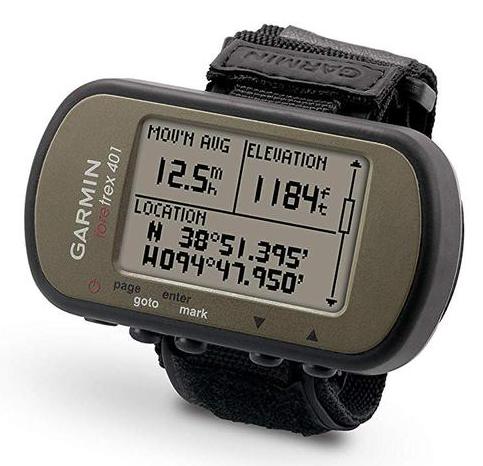
Editor’s Rating:
Display
The GPS unit’s screen is a high-contrast 64 x 100 pixel with a bright LED backlight for low light use. Convenient vertical or horizontal viewing is possible with the dual position display. Topo maps can’t be displayed. This monochrome display screen permits flexibility and customization of data the user requires to be available.
A satellite icon appears on the screen when the GPS is activated. It also displays the amount of battery life remaining. Routes can be tracked, locations marked, and waypoints shared wirelessly at the touch of a button.
Ease of Use
It’s also quite easy to use the Foretrex 401. It comes with instructions to start you off, but for those unfamiliar with GPS functions, it may take 5-10 minutes. It’s also relatively easy to set up a customized view. You can set the local time, latitude, longitude, grid reference, and sunset with this GPS unit. You can also mount it on your wrist due to its small size. There are bolts at the base to allow a watch band fitting.
Durability
The Garmin Foretrex 401 features waterproof construction. You can immerse it in water for 30-minutes without any resulting damage to the unit. This means that it can be used in rain and snow and also swimming. It’s also lightweight and fits nicely on a wrist.
Accuracy
The compass feature of the Foretrex 401 is very precise. Even when moving in a 360-degree circle, it’s on par with a standard compass. The device compliments a map and standard compass for navigation. The electronic compass function is a mechanical compass backup.
Battery
This hunting GPS unit is powered with two AAA batteries that provide as much as 15-hours of use. These aren’t included in the purchase. The use of standard batteries means that you can carry extra ones with you. It’s then easy to swap in newer batteries and keep the GPS running.
- It’s very affordable.
- It has a built-in altimeter and electronic compass to help you stay on course.
- You can view your current location in multiple formats.
- It provides context by keeping track of the route you’ve taken.
- The Li-ion battery lasts for 17-hours on a single charge.
- Maps can’t be saved on the unit.
- It lacks software support.
Guide to Buying the Best Hunting GPS
Buying a dependable GPS model these days can prove to be a daunting endeavor. This is because the market is filled with great units that come at reasonable prices. Choosing one that’ll best suit your needs may be hard. Regardless of what your budget is, make sure you choose a GPS that’s capable of catering to your needs when you’re out in the woods.
GPS Unit Size
Based closely on hiking GPS systems, most hunting GPS units are typically small and light enough to easily fit in a pocket or a backpack. The best units for hunting are usually handheld but these tend to be a bit bulkier than the average smartphone.
You should pay attention to the size of the unit when choosing a hunting GPS. Some models are quite smaller than the others. GPS units with simpler features tend to be more compact. Consider going with a lighter, smaller, and less expensive GPS if you don’t fancy the advanced features of touchscreens, cameras, and other modern GPS accessories.
Touchscreens
Borrowing the technology from modern smartphones, most of today’s GPS units are a touchscreen. These types of units are quite expensive but compact and functional. Anyone who has used a smartphone will find a touchscreen GPS to be comfortable and the interface familiar. Despite the improvement in reliability and functionality of touchscreen GPS units, it’s still difficult for them to be accurate in harsh weather. Water, snow, or gloves may interfere with the screen’s functionality.
However, most of the best hunting GPS units today are exclusively touchscreen. Their screen’s accuracy and sensitivity have constantly been improving. Using touch compatible gloves can help to alleviate some of the hassles of trying to use a touchscreen device in poor weather.
GPS Unit Features
There are lots of high-level features you might want in a hunting GPS. Here are some of the important features you may need your hunting GPS to have.
3-Axis Compass
This is a special type of electronic compass that knows which way you’re facing even while standing still. The compass also remains accurate even if you’re not holding the GPS flat. Traditional 2-axis compasses have to be held perfectly flat while 3-axis compasses don’t. This feature is helpful if you want to precisely navigate while standing still.
Barometer/Altimeter
Having such a tool on your hunting GPS unit will help you measure your elevation above sea level. The barometer also doubles up as an effective weather prediction tool. Some GPS units will give you alerts and weather predictions with the help of an integrated barometer. While it might not be as accurate as the local weather at 6 on the news, it’s more helpful than flying blind.
Weather Forecast Radio
Another important feature that you might want to look out for in a hunting GPS is the weather band radio. This will help you with a minute-to-minute forecast of the weather conditions. It’s a very important pre-condition for long hunting expeditions when you’re out in the open for an extended period. This feature is usually associated with a two-way radio that provides effective and necessary communication if required. Therefore, you can stay updated on the weather front and also communicate with fellow hunters and family if necessary.
Maps
Maps often come in different designs and always tend to be more of a hassle than anyone wants. Many GPS makers today offer free maps for life with certain units or aftermarket map downloads. Your GPS unit should be preloaded with topographic maps at the very least. Satellite maps are highly recommended for hunting whenever they’re available. These aerial photos are overlaid with your location and any destinations you might want. This helps you to determine the smartest route to get to and from the hunting trail in the field. It’s also helpful to see what’s around you in case you decide to move once you’re in the field.
Connectivity
Connectivity is important today. Modern GPS units can use Bluetooth features to share data, routes, waypoints, and more with one another. You can easily share information with your hunting partner in the field before you split up. The other important feature is connectivity to software updates, map downloads, and other features. Most GPS plug into a computer using a conventional USB cable. Newer GPS from good manufacturers, such as Garmin and Delonge usually feature painless integration with computer interfaces.
Proximity Alarm
This is an innovative feature that comes with newer GPS units. It helps you mark an area of interest on the map to receive a notification every time you enter that radius. It’s very useful in pointing out where stands and other blinds are.
Versatility
You need to find a versatile GPS unit so you don’t have to worry about harsh weather destroying it. Therefore, consider a unit that’s waterproof and constructed with a shockproof design.
Storage Memory
It’s great to buy a GPS with large internal memory and a micro-SD card slot. This feature allows you to increase the unit’s memory space so that you can save data, additional maps, updates and points of interest.
Batteries
These are perhaps the most important feature of a good hunting GPS. People take it for granted that they can easily charge their devices. In the woods, however, recharging a GPS unit can be hard. Battery packs come in handy when you want to charge your devices on the go. You should consider getting a rechargeable battery pack if you need more power and have a hunting GPS unit with an internal battery.
If your GPS unit is powered using standard replaceable batteries, such as AA and AAA batteries, it’ll be advisable to carry extra with you. These types of batteries can be easily replaced in the field when they die out. Carrying a couple of extra batteries doesn’t weight much and can get you several days of constant GPS use. It’s always a gamble when your GPS has integrated batteries since they can run out of charge in the field. Carrying a backup battery charger pack will save you from possibly getting lost.
Bottom Line
Individuals who fancy hunting will find that hunting GPS is an invaluable tool for them. Campers and hikers will also find these units very useful. The best hunting GPS doesn’t have to be too fancy or expensive. As you’ve seen from the review of the best hunting GPS, you can get one with all the features to fulfill your needs while in the backcountry without spending too much.
Whether you need a GPS with advanced computing power for finding your way in unfamiliar territory or just a simple gadget to help you find where you left the ATV, there’s a model to suit every need and budget. Remember to consider how you’ll be using the hunting GPS before you decide to settle on one.
